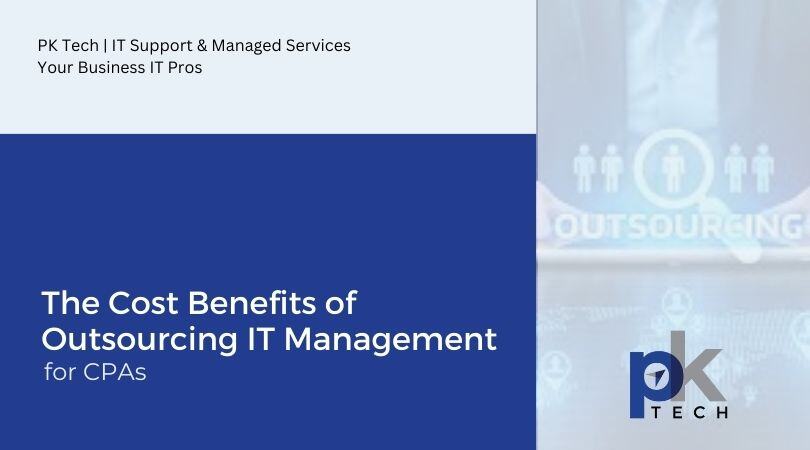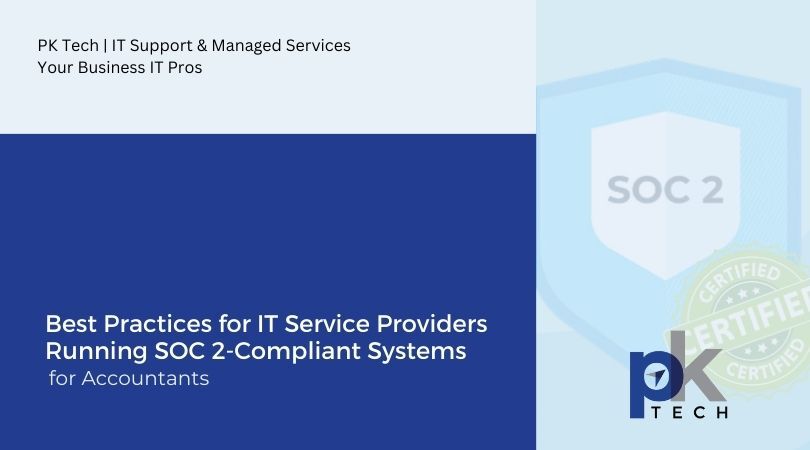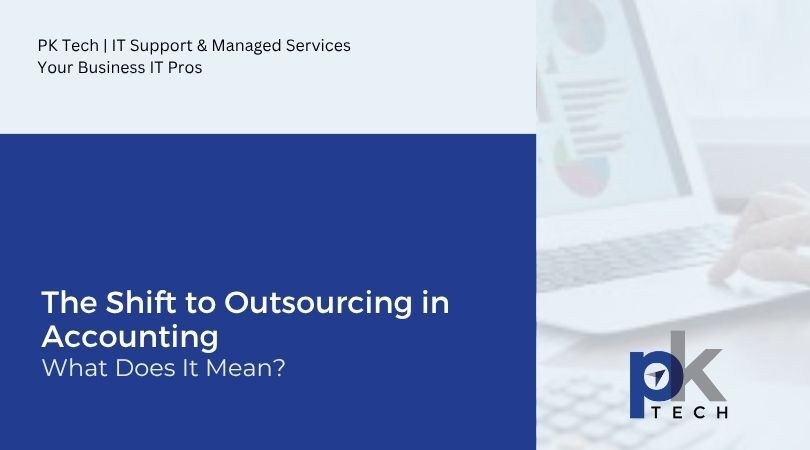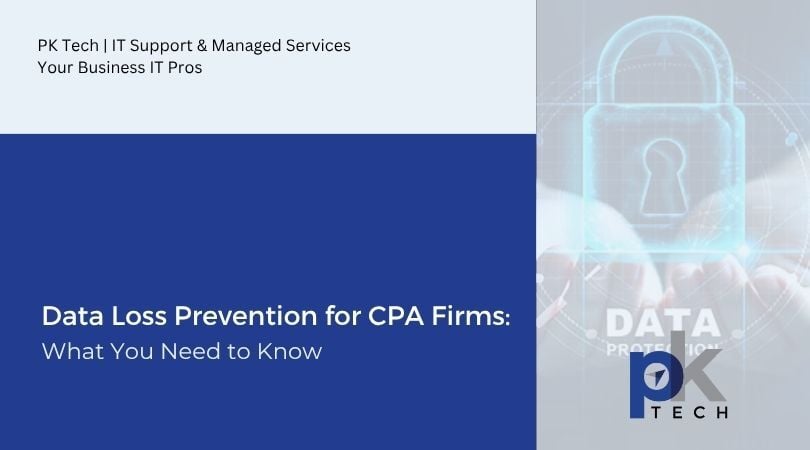The Cost Benefits of Outsourcing IT Management for CPAs
As you’ve nearly survived the April 15th deadline, your firm may have experienced hiccups along the way — or more serious issues — making you...
Certified Public Accountant (CPA) firms handle a wide array of sensitive financial data daily — from client tax information to business financials and payroll records. With cyber threats becoming more sophisticated and compliance regulations tightening, the need for robust data security solutions is no longer optional. One critical aspect of securing sensitive information is implementing a Data Loss Prevention (DLP) solution, particularly when paired with managed IT services.
In this blog, we analyze how CPA firms can effectively adopt DLP solutions through managed IT support to protect client data, ensure compliance, and maintain trust.
Data Loss Prevention refers to a set of tools and processes used to ensure that sensitive data is not lost, misused, or accessed by unauthorized users. DLP solutions monitor and control data movement across endpoints, networks, and storage systems, enforcing policies that prevent the accidental or intentional sharing of confidential information.
For CPA firms, DLP plays a vital role in safeguarding Personally Identifiable Information (PII), financial documents, Social Security numbers, and other regulated data from both internal and external threats. It’s not just about cybersecurity — it’s about compliance, reputation, and operational continuity.
CPA firms are prime targets for data breaches due to the volume and value of the information they hold. Implementing DLP within a managed IT services framework provides multiple advantages:
Not all DLP solutions are created equal. When choosing and deploying a DLP system through a managed IT provider, CPA firms should prioritize the following capabilities:
Before data can be protected, it must be identified and categorized. DLP tools scan systems for sensitive content — such as tax forms or payroll spreadsheets — and label it accordingly. This classification helps tailor protection strategies based on data type and importance.
Effective DLP systems analyze not only what data is being moved but also the context — who is sending it, where it’s going, and how it’s being transferred. This helps reduce false positives and enables more intelligent decision-making.
Whether data is leaving via email, USB, or cloud applications, DLP tools monitor and block unauthorized transfers in real-time. This is crucial in accounting environments where email and file sharing are routine.
Visibility is key. DLP tools generate reports and trigger alerts for suspicious behavior, helping firms track compliance efforts and understand potential vulnerabilities.
To ensure successful DLP adoption, CPA firms should follow a few key best practices in partnership with their managed IT provider:
The accounting landscape of 2025 is data-driven. Protecting client information is not just good practice — it’s a fundamental business requirement. Implementing a Data Loss Prevention solution within a managed IT services strategy equips CPA firms with the tools, monitoring, and expertise they need to stay secure and compliant. By proactively addressing data risks through DLP, firms can focus on serving their clients with confidence, knowing their information is protected.
Ready to implement DLP? Our team is ready to chat.
As a managed IT service provider, PK Tech is proud to offer 15 years of experience with a focus on accounting firms. We boast AICPAs SOC 2 Type II attestation, proving via third-party audit by an independent CPA firm that we passed a rigorous and comprehensive assessment of our security and privacy controls. Schedule a time to talk with our team here.

As you’ve nearly survived the April 15th deadline, your firm may have experienced hiccups along the way — or more serious issues — making you...

Accountants today should be considering cybersecurity infrastructure and data protection as critical as actually filing their clients’ tax returns...

Accounting firms are under increasing pressure to streamline operations, reduce costs, and deliver more strategic value to clients. As a result, many...
